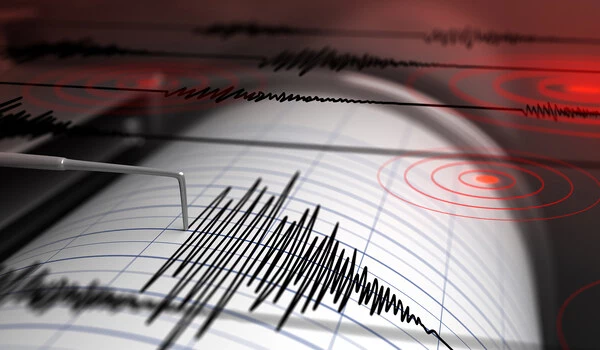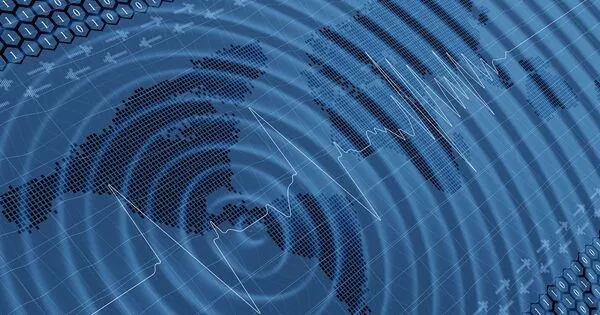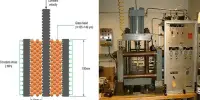Since 2000, approximately 14% of strike-slip earthquakes of magnitude 6.7 or greater have been supershear. That’s 50% more than was previously estimated. When a fault ruptures faster than seismic shear waves can travel through rock, a supershear earthquake occurs. Because scientists had mostly looked for them on land, the events were thought to be rare. According to the findings, disaster planning assessments should include whether a fault is capable of producing supershear quakes, which are potentially more destructive than other types.
According to a study led by UCLA geophysicists and published in Nature Geoscience, powerful supershear earthquakes are much more common than previously thought.
The researchers examined all 6.7-or-greater magnitude strike-slip earthquakes worldwide since 2000, a total of 87, and identified 12 of the supershear type, accounting for about 14% of the total. (Four of the earthquakes went unreported previously.) That figure is more than double what scientists expected; previously, less than 6% of strike-slip earthquakes were classified as supershear.
When the edges of two tectonic plates rub sideways against each other, an earthquake occurs. Supershear quakes are a subtype of that group that occur when faults beneath the surface rupture faster than shear waves – seismic waves that shake the ground – can move through rock. The effect captures energy, which is then violently released; the effect is comparable to a sonic boom.
As a result, supershear earthquakes tend to cause more shaking, and are potentially more destructive, than other earthquakes that have the same magnitude.
When an airplane flies faster than sound can travel through air, a cone of pent-up sound waves forms in front of the plane and when it catches up, we hear it all at once. Supershear earthquakes are potentially more destructive than other kinds of earthquakes because they are more effective at generating seismic waves, with more shaking, which could cause more damage.
Lingsen Meng
“When an airplane flies faster than sound can travel through air, a cone of pent-up sound waves forms in front of the plane and when it catches up, we hear it all at once,” said Lingsen Meng, UCLA’s Leon and Joanne V.C. Knopoff Professor of Physics and Geophysics, and the paper’s corresponding author. “Supershear earthquakes are potentially more destructive than other kinds of earthquakes because they are more effective at generating seismic waves, with more shaking, which could cause more damage.”
The study also discovered that supershear earthquakes occur just as frequently beneath the oceans as they do on land, and that they are most likely to occur along strike-slip faults like California’s San Andreas Fault.
The findings suggest that disaster planning efforts should consider whether nearby faults are capable of producing supershear earthquakes and, if so, take measures to prepare for a higher level of shaking and potential damage than non-supershear earthquakes.
Meng said the reason relatively few supershear earthquakes have been found is that researchers mainly study earthquakes on land. The paper’s co-authors are UCLA doctoral students Han Bao and Liuwei Xu of UCLA and Jean-Paul Ampuero, a senior researcher at Université Côte d’Azur in Nice, France.

The scientists used a method called backprojection to determine the direction in which seismic waves arrived to infer how fast an earthquake moves along the fault. The technique applies an algorithm to analyze brief time delays between seismic waves as they’re detected by a group of sensors. The method is similar to how one can locate a person by tracking the signals their smartphone sends to cell towers.
The data revealed supershear earthquakes tend to occur on mature strike-slip faults, in which the edges of two continental plates rub laterally against each other. In a mature fault, that action has been happening for long enough to create a zone of damaged rocks that act like a dam around the fault, slowing or blocking seismic wave propagation and concentrating their energy.
The findings, according to Ampuero, could help scientists better understand what it takes for a fault to produce the types of ruptures that cause supershear earthquakes. At least one large supershear earthquake has occurred in California in the last century: A 6.5-magnitude earthquake in Southern California’s Imperial Valley region in 1979 injured people as far away as Mexico and severely damaged irrigation systems. And, despite the fact that it predated scientific monitoring, the 1906 earthquake that devastated San Francisco was most likely a supershear event.
Not all supershear earthquakes are that disastrous. The shape of the fault, the rocks around it, and other factors can affect the propagation of seismic waves and limit the accumulation of energy. Faults that curve tend to slow, deflect or absorb seismic waves, while straight faults let them flow freely.
Meng’s research group previously identified the devastating 7.5 magnitude earthquake that struck the Indonesian island of Sulawesi in 2018 as a supershear event in previous study. At least 4,000 people were killed in the quake and tsunami that followed. Despite the curve in the Indonesian earthquake fault, the horrific damage occurred because the fault moved faster than any previously recorded fault, and energy from previous temblors was likely stored up in the rocks, waiting for a moment to burst, according to Meng.
Powerful supershear earthquakes, once considered rare, are much more common than previously thought, according to a study led by @UCLA geophysicists. https://t.co/AcFrqgpoUD
— UC Newsroom (@UC_Newsroom) November 2, 2022
















